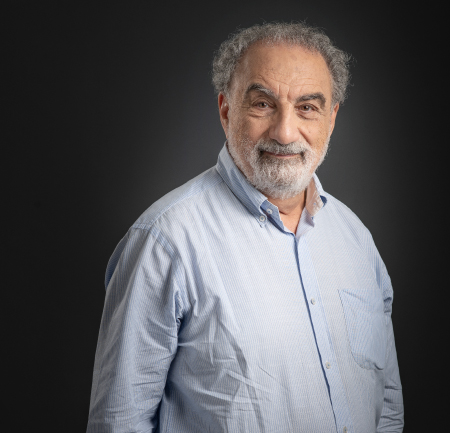
Studying our past is important

Professor Panayiotis Touliatos, a distinguished faculty member in the Department of Architecture, explains what historical structures can offer to contemporary architectural practice
In the vast wonderful Universe, at some sacred moment, an insignificant Planet was blessed with the privilege of sustaining life. From the womb of this life sprang the Logical Being: Human, the observer and the judge of this Universe. This human changed the form of the planet and dramatically affected, and continues to influence, the life on it. Today, more than ever, in the evolution of a major environmental crisis, the role of humans on the planet seems particularly critical.
The threatening destruction of our natural environment goes hand in hand with the destruction of our built environment. It is, thus, important to highlight and preserve our architectural heritage. Why? Professor Panagiotis Touliatos holds the answer.
“A special and characteristic quality of humans is the continuous evolution of their knowledge and achievements”, explains Prof. Touliatos. “Also, the incredible tendency of creative ingenuity of their minds to which they owe their culture. A culture based on their intellectual, technological, economic and moral development, on their sustainable development. And every human development is based on the experiences of the humans’ past. Every new endeavor of humans is supported and developed through their successive relevant experiences. There is no future without relevant past.”
According to Prof. Touliatos, Chair of Frederick University’s Department of Architecture and coordinator of the MSc in Conservation and Restoration of Historical Structures and Monuments, the historic environment and its heritage assets should be conserved for the quality of life they bring to this and future generations. In a changing world that relies on advanced technologies, it is necessary to sustain the work of craftsmen of the past.
“We want to understand why historic buildings are standing during very severe earthquakes, when at the same time, our modern, calculated buildings are collapsing”, comments Prof. Touliatos. “We want to know why the atmosphere is so inviting and so cool in these buildings, when at the same moment we need a lot of machinery to create an affordable climate in our modern houses. We want to know why the traditional surroundings in our villages in historic cities is inviting us to spend our time there, contrary to the modern neighbourhoods of large cities.”
As Prof. Touliatos highlights, “the next generations of scientists, and especially of architects, must be able to face the threatening destruction of the natural and built environment.” This priority directly links to the Sustainable Development Goals 11 & 13: Make cities and human settlements inclusive, safe, resilient and sustainable & Take urgent action to combat climate change and its impacts. “From 1990 to 2000, the ‘International Decade for Natural Disaster Reduction’ where I had the honour to represent Greece, scientists representing 82 countries, studied this evolving climate change and its potential effects, which are already in full scale. A development that brings, and further prejudges, ominous situations for human civilization.”
Prof. Touliatos is the author of a book concerning antiseismic techniques on a famous and large monument of the 12th century on Mount Athos. The study of such techniques inspired him to design innovative, modern, large-span, antiseismic structures. “This is my goal: I want my students to study and learn from the past in order to face the challenges of the future. We want to educate our students to draw conclusions and lessons from the past, to train on today’s and tomorrow’s technology and improve our environment’s conditions. All my attention is focused on the combination of lessons of the past and goals of the future, history and modern era, technology and art, the inventive-creative energies of humans and the sustainable development of their environment and -always and above all- the ethics that come with their respective activities. The Architects, the Engineers are the ones who will complement, improve and beautify the built environment of our planet. Or else they will degrade it through their works.”

